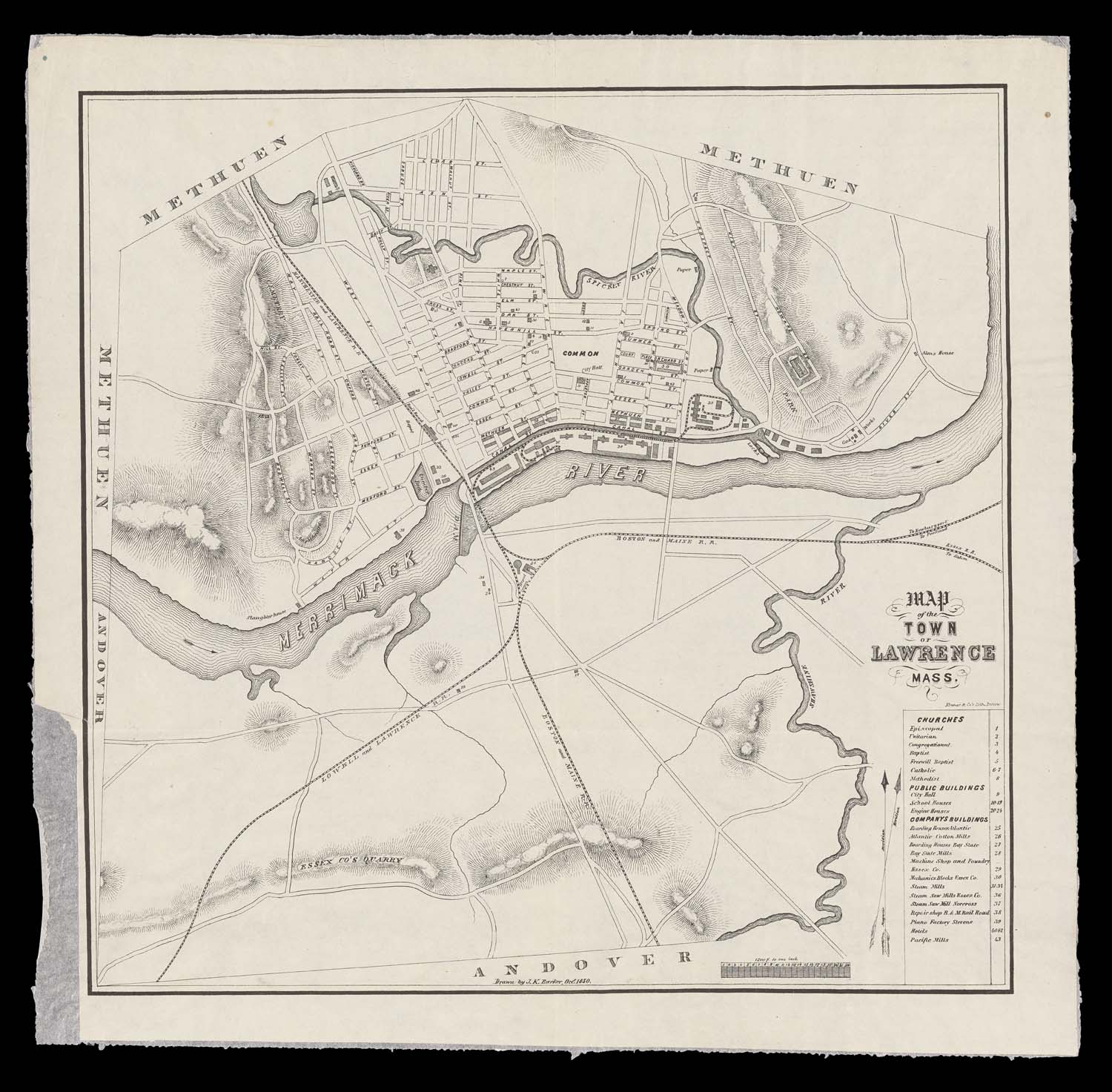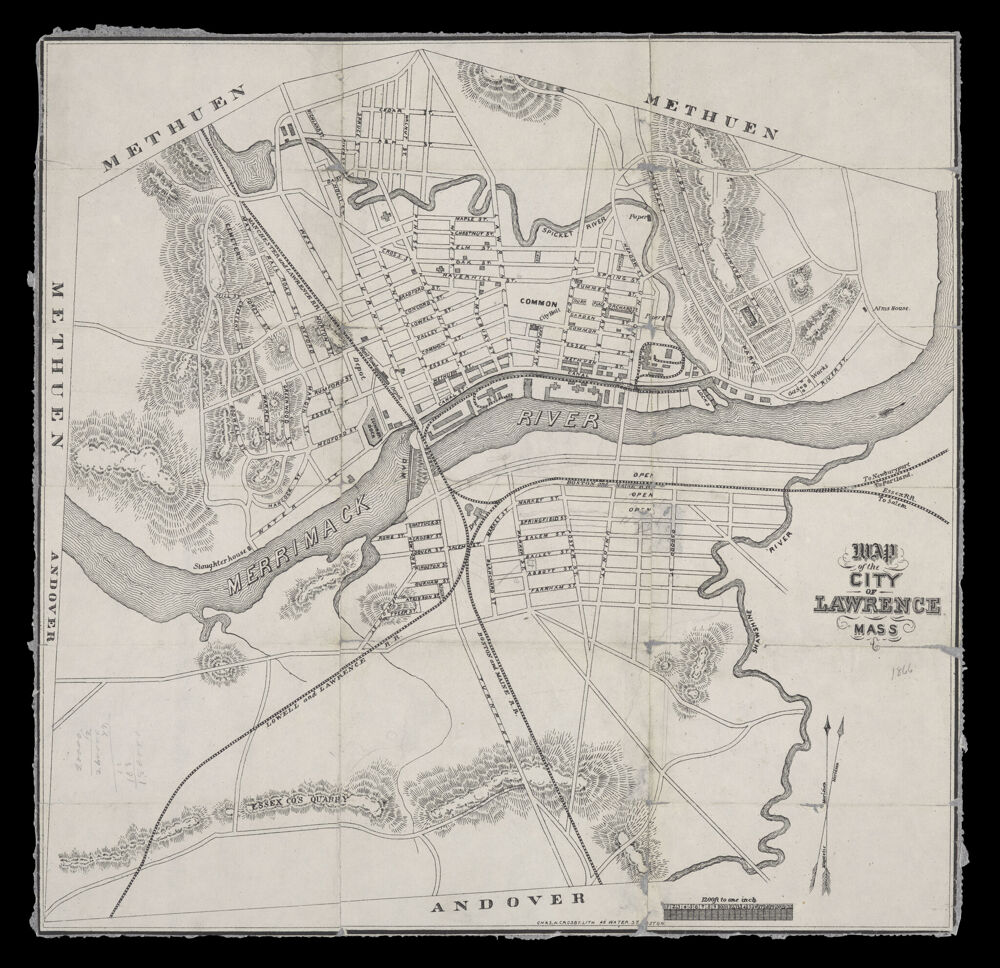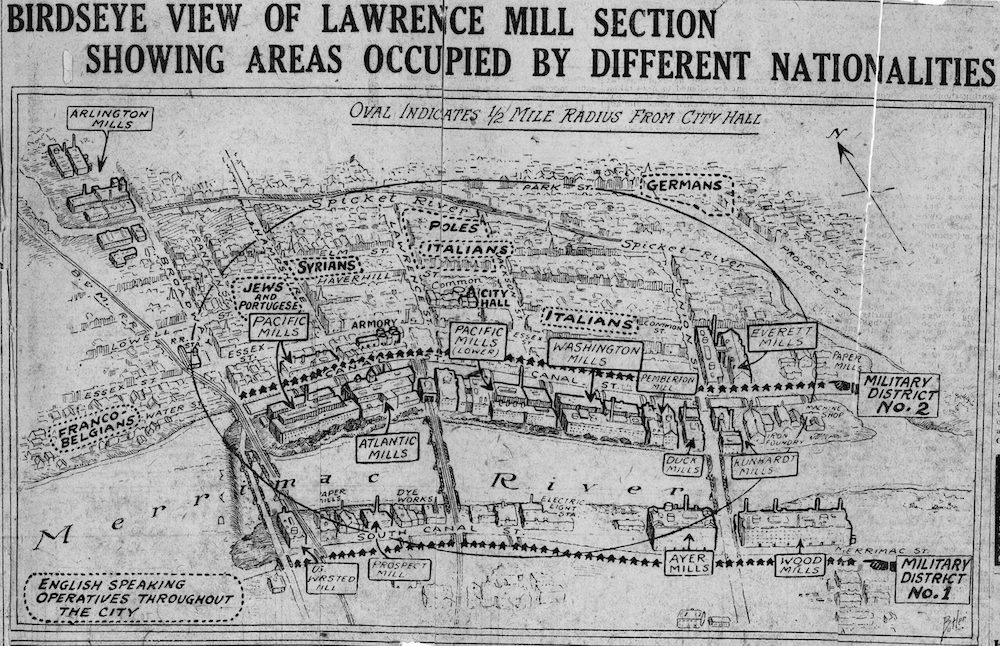
20. Map of the Town of Lawrence, Mass.
James K. Barker, 1850

Click on image to see larger version.
The success of industrial investment in Lowell spurred the development of other mill cities on New England’s major rivers. For example in the mid-1840s, Boston financiers, led by industrialist Abbott Lawrence, began constructing another model mill town on the Merrimack River about ten miles northeast of Lowell. Named Lawrence, the mill town grew rapidly. In 1850, Lawrence had a population of 8,000 and by 1870, the number more than tripled reaching almost 29,000. These two maps, rendered by the same cartographer only three years apart, reflect this growth. The 1850 map shows development primarily on the north side of the river where the industrial activity was concentrated. The legend identifies four major mills and two groups of tenements near the river and parallel canal. The 1853 map, published the year Lawrence incorporated as a city, indicates the street plan has almost doubled in size in just three years, with new streets laid out south of the river.
21. Map of the City of Lawrence, Mass.
James K. Barker, 1853

Click on image to see larger version.
22. “Bird’s Eye view of Lawrence Mill Section Showing Areas Occupied by Different Nationalities”
from Washington Evening Star
[unknown author], 1910
Courtesy of the Lawrence History Center Collection

Click on image to see larger version.
As Lawrence, Massachusetts, grew during the remainder of the 19th century, it became known as the “City of Immigrants,” with immigrants providing the majority of labor for the textile mills. As depicted on this 1910 newspaper map from the Washington Evening Star, the nationalities and ethnicities represented in the growing city included: German, Italian, French Canadian, Jewish, Syrian, Polish, Portuguese, and English immigrants. The city is also known for the 1912 labor strike, often referred to as the “Bread and Roses Strike.” This strike, which was supported by many of the city’s recent immigrants, was one of the nation’s more important and widely reported labor struggles.